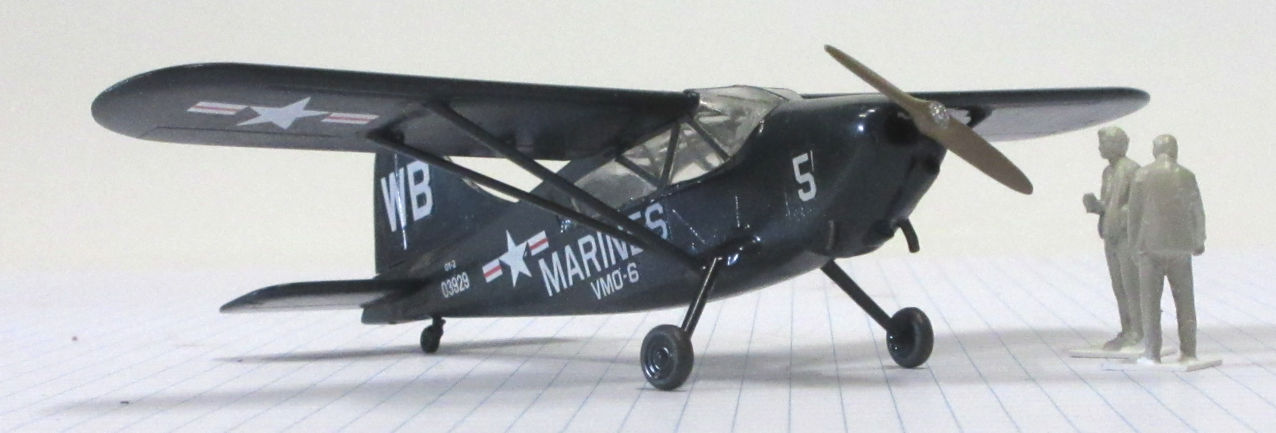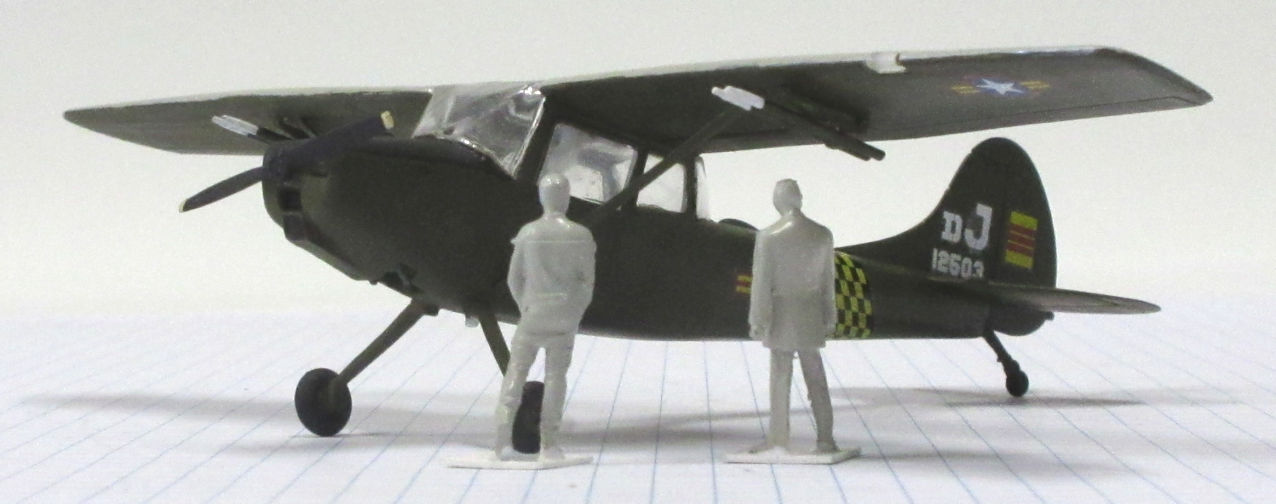Observation Aircraft
Auster III – Stinson OY-1 – Cessna O-1

From the beginning of military aviation observation has been a key role, allowing commanders to assess the situation on the battlefield more realistically, spot for artillery and direct strikes by more heavily armed aircraft on ground targets. Aircraft with wings above their cabins gave observers excellent views of activity on the ground below Being light they can also operate from simple and small airstrips to carry small loads or passengers to important positions.
Auster III in 1/72 by AZmodel
The Auster was a British adaption of the pre-war American Taylorcraft light aircraft into what was called, at the time, an Air Observation Post. Their first role was spotting for the artillery and they were piloted by officers of the Royal Artillery. The Auster III was a version of the earlier Auster I fitted with a British deHavilland Gipsy Major engine because of a shortage of American engines. A total of 467 Auster IIIs were built, a number of them were sent to Australia where they served with the Royal Australian Air Force during the Pacific War. After the war some were disposed of to civil aviation, including the one depicted here which flew for a gliding club during the 1950s.
Airfix produced the first kit of an Auster in 1958, a version of the specially modified Auster used during British expeditions to Antarctica. I made it a few years later and it was not, even then, an impressive kit, although it offered options for ski, float or wheeled undercarriage. In 1979 they offered a modified kit that made up into an Auster AOP VI which was still far from great. Airfix have announced that they are republishing the Auster Antarctic in their Classic range, you might buy it as a nostalgia item but it would be a challenge to build well. At some point Kiwi Resin published a resin Auster IV/V but it appears to be no longer available. This leaves us with the series of three Auster AOPs from AZmodels. They are reasonable kits and not difficult to make if you are used to making AZmodel kits. The review in Modelling Madness says virtually the same thing and concluded, ‘Not recommended for a beginner’.
Stinson OY-1 in 1/72 by AZmodel
This aircraft was a military development of an earlier Stinson civil aircraft first displayed in 1939. In service with the US Army Air Corps it was called the L-5 and with the US Navy and Marine Corps as the OY-1. Over 3,500 were manufactured. They served with the Army as liaison squadrons in most theatres of the war and with the Marines in artillery observation squadrons widely during the Pacific Islands campaigns of 1944 and 1945. An improved version of the aircraft, the OY-2, was used extensively during the Korean War.
According to Scalemates there’s only ever been one kit of this aircraft, published by AZmodel first in 2009 and then with few parts and new decals nine years later. I thought this was a monster of a kit and really struggled with it, as my Workbench Note recounts. A build review of this kit by Joel Hamm in Modeling Madness suggests he did not enjoy building this model any more than I did. The in-box review of this kit in Internetmodeler points out problems with the actual version of the OY this kit builds into which also caused me grief. Unless you really need a model of this aircraft my advice is to find a better and easier kit to build.
Cessna O-1 in 1/72 by Airfix
This aircraft was ordered by the US Army which wanted an all-metal liaison and observation aircraft that would have a longer life than the earlier fabric covered aircraft. Design began with the Cessna 170 civil aircraft but was much modified to improve visibility from the cabin in all directions. The first one flew in December 1949 and they were used during the Korean War. They were still in service during the Vietnam War where they were used by United States and South Vietnam forces in various roles such as artillery spotting, front-line communications, target acquisition and as forward air control for tactical aircraft. They were gradually replaced by newer aircraft and retired from service in 1974.
Steve Pulbrook built this model from the venerable Airfix kit that was first published in 1973 and has been republished many times since, unaltered. Taking this into account, the in-box review in Cybermodeler Online says it should turn out okay and ‘build up into a nice model with the use of some modelling skills’. Airfix kits of this vintage are generally good honest kits that can be made up into something respectable, but making a great model from the kit would be remarkable. AVI Models published a kit of the O-1 in 2021 which comes in four different boxings, each with different decals. I have a copy which looks much more refined than the Airfix kit and includes an etch fret and really impressive decal sheet, so it is probably preferable to the Airfix offering. However, since in-box reviews are hardly worth the paper they’re written on, I leave it to somebody who has made this kit to offer a final opinion.



